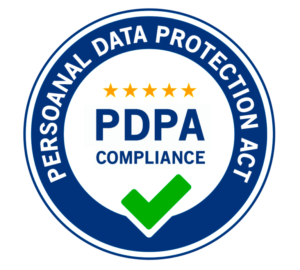iNSIGHT for Web Server
Outbound security appliance for web services to protect against information leakage and defacement



High accuracy using patented technologies to prevent false positives

Better compliance with regulations such as PDPA Section 24 (Protection of personal data)

Providing maximum security with high performance and availability by integrating with load balancer and CDNs
Feature Focus:
IWS GenAI Data Leakage Prevention (DLP)
IWS provides a crucial last line of defence against compromised outbound sensitive data from GenAI countermeasures failure.
GenAI firewalls and countermeasures alone are currently not fully able to prevent outbound data breaches should malicious compromises occur.
GenAI DLP protection by IWS:
| Aspect | Threats | Impact | Countermeasures | IWS Protection |
|---|---|---|---|---|
| People |
|
|
|
|
| Process |
|
|
|
|
| Technology |
|
|
|
Features

Compatibility

3 major series to choose from depending on your performance requirements with no functional loss between series
Download DatasheetComparison Matrix
| Protection against: | Protection Options | ||
|---|---|---|---|
| Static Code Analyzer | Common Data Loss Prevention Products | iNSIGHT for Web Server | |
| Information leakage due to compromised web servers via internal sources | |||
| Infection / Transmission of malicious code to visitors | |||
| Data leakage due to application vulnerabilities | |||
| Information leakage due to server errors or misconfiguration | |||
| Information leakage due to malicious or accidental uploads | |||
| Public disclosure of defaced web server | |||
| Type of Defacement | Protection Options | |||
|---|---|---|---|---|
| File Integrity Solution | Defacement Scanners | Human Monitoring Services | iNSIGHT for Web Server | |
| Defacement content is stored in files on web site, such as HTML, JSP, ASPX, PHP and etc. | * | |||
| Defacement content is stored in database used by content management systems, such as Sharepoint, Sitecore, Joomla, Wordpress and etc | ||||
| Defacement content is shown conditionally, such as shown to search engines only, referrals from search engines, mobile users and etc. | * | |||
| Defaced content in newly added files, without links from any existing pages, which constitutes the No. 1 type of defacement on Zone-H. | * | |||
| Transient cross-site techniques using scripts, layers, frames to display defaced content from external sites, for e.g. SG PMO and Istana defacement in 2013. | ||||
| Transient reflected defacement where defacement input is reflected in the response page from the vulnerable website. | ||||
| Real-time protection to block defaced content from being shown or display the last known good copy even after the web page is defaced in less than 5 seconds. | ||||
| Restore the display of non-defaced, non-malicious or non-leaky content and preserve forensics evidence on the affected web, app or database servers without restoring content automatically, hence preserving admissible court evidence for legal proceedings. | * | * | * | |
| Protect post-authenticated pages, such as dashboards. | * | |||
| Protect non-HTML content, such as Restful API, SOAP XML and others, which are commonly used to support mobile applications. | ||||
Frequently Asked Questions
Existing security systems provide good protection against incoming attacks from external sources. IWS complements such systems by extending the protection profile to include protection against outgoing information leakages.
Although some WAFs are able to scan outgoing traffic, their ability in this area is very limited. This is understandable as WAFs are primarily focused on incoming threats. For instance, though some WAFs claim they can detect sensitive information such as credit card and Social Security numbers, they are not able to detect presence of such information if the information is contained in common document formats such as Microsoft Office or PDF files. In addition, WAFs are usually not able to detect presence of leakages of source codes as they are not equipped to distinguish between source codes and normal English text. For these areas, IWS has made use of patented technologies to achieve what WAFs cannot do.
For IPS, again as their name implies, their focus is in protecting against intrusions, not leakages.
Likewise, existing WAF or IPS solutions cannot prevent defaced or maliciously compromised web pages from being shown to the public, while IWS can.
Hence, IWS complements WAFs and IPS to provide a more comprehensive protection to your organisation.
Please access the Comparison Matrix for a more detailed comparison.
Out of the box, IWS protects against:
a. Leakage of source code
b. Leakage of software debug messages
c. Leakage of system configuration
d. Leakage of personal information
e. Leakage of financial information
f. Leakage of healthcare information
g. Display of defaced/hacked web pages
h. Display of maliciously compromised web pages
IWS also allows users to detect other types of sensitive information, without the need to learn a new scripting or programming language. Customised detection logic can be added via web-based custom editor.
Good quality control processes and procedures are important
and should still be implemented and followed even when security systems are present.
On the other hand, just as no one will say that good development processes and
procedures can remove the need for web application firewalls, tightening of quality
control does not remove the need for a information leakage system for web servers.
From our research, there are 4 main causes of information leakage from web servers:
a. compromised web servers
b. web application errors
c. server errors
d. sensitive documents left on web servers
At best, we expect good quality control can reduce the risks from server errors
and sensitive documents left on web servers. Leakages due to compromised web servers
or web application errors may not be that easily detected by quality control
processes.
IWS only provides information leakage protection for web servers. Depending on the market conditions, iNFOTECT will decide whether to develop a similar product for email servers and instant messaging servers.
IWS is usually deployed “in front” of the web servers it is
protecting, hence it is situated between any existing network firewall/web application
firewalls/intrusion prevention systems and the web servers.
As IWS can be used
to protect Internet-facing and Intranet-facing web servers, it can be located in the
same network segments where these servers are located.
IWS products are designed to sustain high throughput. With IWS running in interception mode, user experience can even be better due to the high performance proxy cache and load balancing features within IWS. With IWS in monitoring mode, there is no impact as IWS will be situated in an out-of-band segment.
Yes, IWS products can be integrated with existing high availability and load balancing solutions to provide theses features.
As a best practice, it is recommended to deploy IWS nearer to
where the web servers are located. Hence, in a distributed web server architecture with
different access gateways to the Internet, multiple nodes of IWS should be deployed to
the distributed sites while still remain centrally-managed via a secure web-based
management console.
If all the distributed web servers shared a common gateway
to the Internet, one can choose to deploy more advanced models of IWS, which are built
to support very high throughput, near the common Internet gateway.